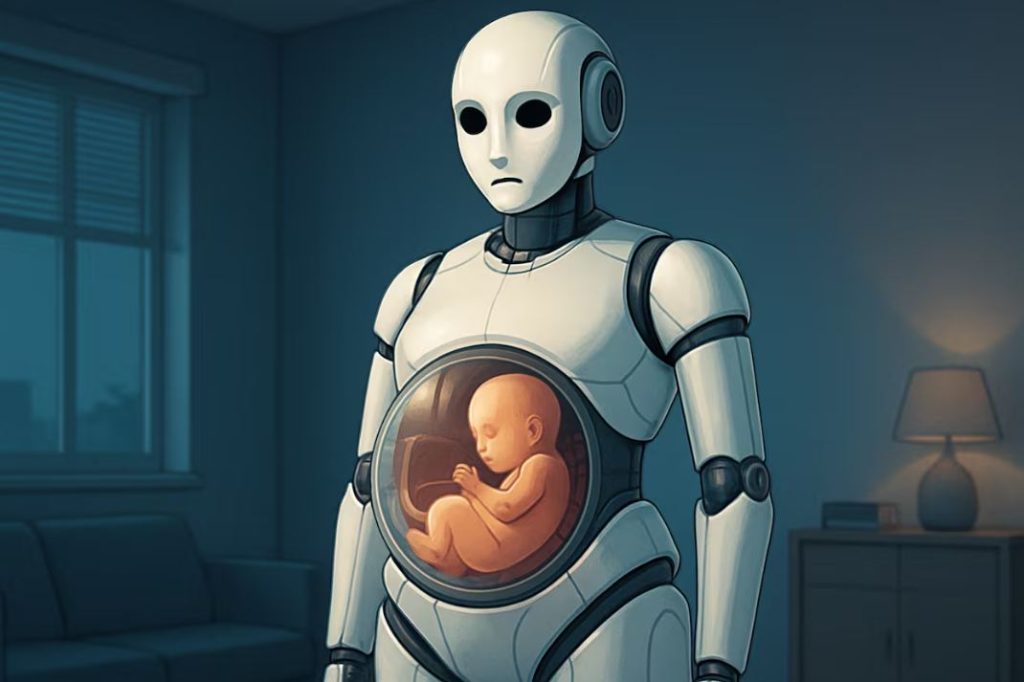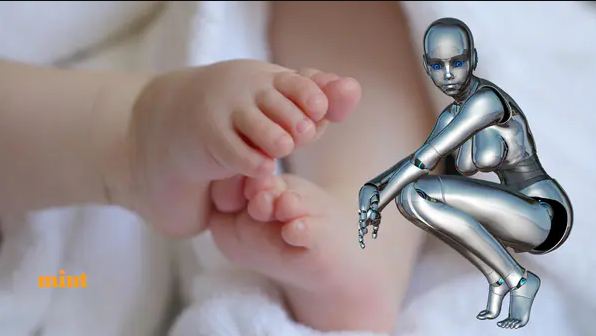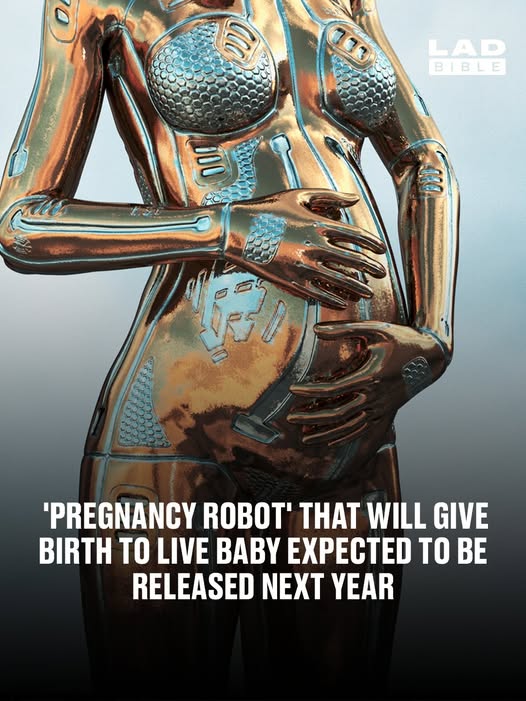According to Chinese researchers, a revolutionary humanoid robot capable of carrying and delivering a live baby may be just around the corner. This unprecedented project is led by Dr. Zhang Qifeng, founder of Kaiwa Technology in Guangzhou.
What Exactly Is the “Pregnancy Robot”?
The concept centers around a humanoid robot equipped with an artificial womb. This system would replicate the full gestational process—from fertilization to delivery—without requiring a human mother. The fetus would grow inside a synthetic womb filled with artificial amniotic fluid, receiving oxygen and nutrients through a tube resembling an umbilical cord. Dr. Zhang claims the artificial womb technology is already mature—they now face the challenge of integrating it into the robot’s abdomen so that “a real person and the robot can interact to achieve pregnancy”

Timeline and Pricing
The team expects a working prototype by 2026, with a projected cost of around 100,000 yuan (roughly £10,000 or $14,000 USD)
Building on Earlier Breakthroughs
This innovation builds on previous successes in animal studies. In 2017, researchers at the Children’s Hospital of Philadelphia kept premature lambs alive in a “biobag”—a clear enclosure filled with artificial amniotic fluid and connected by umbilical-like tubing. These experiments demonstrated the viability of supporting life outside a mother’s womb—paving the way for human-oriented applications.
Potential Advantages
Proponents highlight several benefits:
- Relief for individuals facing infertility—this technology may offer a new path to parenthood for those unable to conceive naturally.
- Eliminating physical burdens associated with traditional pregnancy and childbirth.
- Lower costs compared to human surrogacy, especially in places like the U.S., where surrogacy can range from $100,000 to $200,000
- Potential for medical advancement—the system could enable new avenues in reproductive science, fetal medicine, and prenatal care
Ethical, Legal, and Social Implications
Despite its promise, the project raises profound ethical and societal questions:
- Parenthood and identity: What does it mean to be a parent when gestation is outsourced to a machine?
- Commodification of birth: The idea of paying for childbirth via a robot may prompt concerns about commodifying human life
- Maternal–fetal bond: Critics argue that maternal hormone interactions and emotional connections cannot be replicated by synthetic environments. Some caution that this technology could “pathologize” pregnancy—treating it as a condition to be managed rather than a human experience
- Policy and regulation: Authorities in Guangdong Province are already consulting with the research team to draft legal frameworks addressing issues like the rights of robot-born children, regulation of reproductive materials, and definitions of parenthood.
Where Does This Lead?
Set to debut in 2026, China’s “pregnancy robot” represents a futuristic leap in reproductive technology. If successful, it could redefine infertility treatment, reproductive rights, and the ethics of birth itself. Yet it also forces a reevaluation of what it means to be human in an era where biology may no longer define creation. Whether this represents a triumph of human ingenuity or a troubling shift toward mechanized reproduction will depend on how society, regulators, and ethicists choose to respond.

Conclusion
The development of China’s pregnancy robot marks one of the most ambitious frontiers in reproductive science. By combining artificial wombs with advanced robotics, researchers are attempting to remove biological limitations from the process of creating life. While the technology could provide hope for millions facing infertility and reduce the physical risks of childbirth, it also presents profound questions about ethics, identity, and the meaning of parenthood. As 2026 approaches, society will need to carefully weigh the benefits against the moral and legal challenges. Whether embraced as a breakthrough or met with resistance, this innovation will undoubtedly reshape the global conversation about the future of human reproduction.

















